A Journey of Heritage
HONORING
PAST GENERATIONS

Fayette County, Pennsylvania, has a rich and resilient Black history rooted in the fight for freedom, equality, and community. Located just north of the Mason-Dixon Line, the county played a role in the Underground Railroad, offering refuge to freedom seekers escaping slavery. During the industrial boom of the late 19th and early 20th centuries, African Americans migrated to the area for work in coal mines and steel mills, forming tight-knit communities despite facing racial discrimination. Black residents built enduring institutions, including churches, schools, and civic organizations, which became hubs of cultural life and civil rights activism. Through perseverance and leadership, generations of African Americans in Fayette County have shaped the region’s cultural and historical landscape.
Preserving Our Legacy
The Celebrating Black History Project is committed to preserving and promoting the rich heritage of African Americans in Fayette County. Our aim is to engage the community, raise awareness, and provide educational resources by showcasing the significant milestones, extraordinary individuals, and hidden treasures of our history.
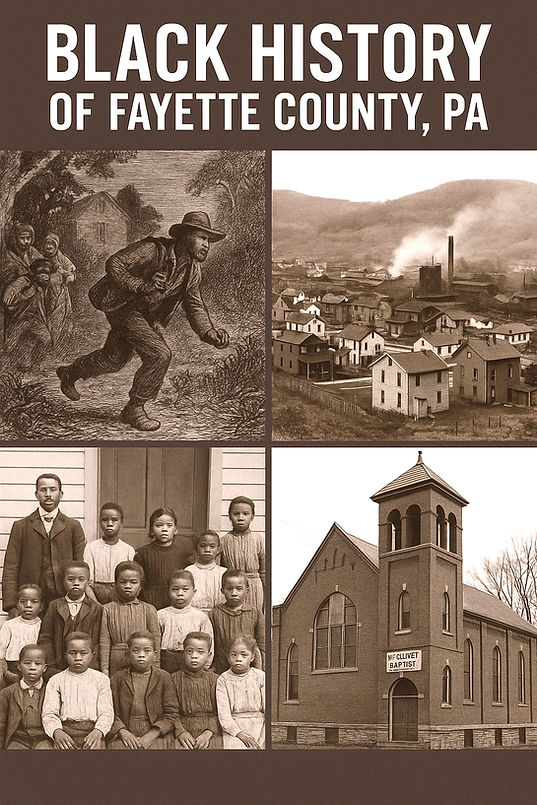
Black History Timeline of Fayette County, PA (1700s–Present)
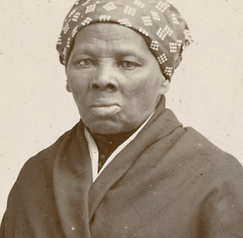
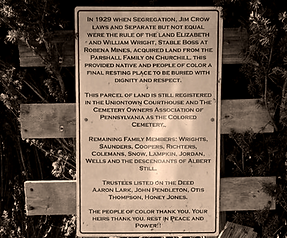



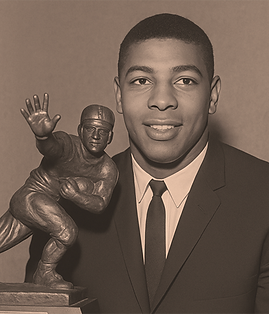

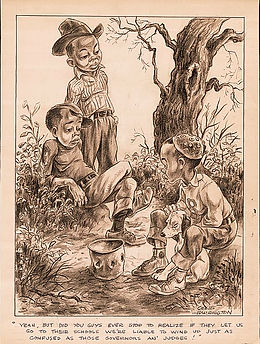
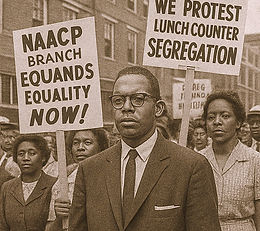
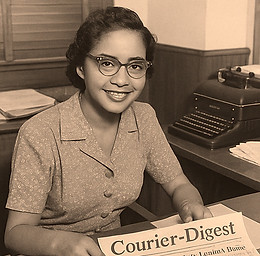


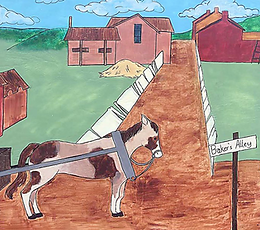







Sources: Key information is drawn from local histories and archives (including Fayette County historians and news reports) and the National Park Service’s account of southwestern Pennsylvania’s African-American history nps.govnps.gov, explorepahistory.com, as well as recent community research (StoryJoy, EEUCC) storyjoyinc.com,100daysinappalachia.com. The timeline synthesizes documented events (with dates and citations) spanning slavery-era records through modern milestones.

Timeline
18th Century (1700s)
-
1754: During the French & Indian War, Col. George Washington lost an enslaved Black man to injury at Great Meadows (near present-day Uniontown). In his journal, Washington noted leaving the wounded slave “with the Indians” after a skirmish in June 1754 nps.gov. This is the earliest record of an African American in the future Fayette County region.
-
1755: Enslaved African-American Samuel Jenkins served as a wagoner on British Gen. Braddock’s ill-fated expedition (1755) through the area. Although owned by an officer, Jenkins was paid for his work during Braddock’s march toward Fort Duquesne (Pittsburgh) nps.gov.
Early 19th Century (1800–1849)
-
1802: A large group of 30–35 enslaved people from Virginia passed through Fayette County on their way west. In January 1802 William Clark led this party along the Braddock Road (through Great Meadows/Uniontown, Hopwood, and Brownsville) en route to Kentucky nps.gov. (This episode, recorded in Clark’s letters, shows how Fayette’s roads were used in the interstate slave trade.)
-
1811–1833: The National Road was constructed west from Cumberland, MD to Illinois. By the early 1830s it passed through Fayette County (reaching Uniontown and Brownsville). This highway became an important commercial route and later an Underground Railroad corridor. nps.gov storyjoyinc.com.
-
1840s–1860s: As slavery’s abolition movement grew, Fayette County became a haven for freedom-seekers. Uniontown’s Baker’s Alley (a back street off Main Street) was famed as a safe house for fugitive slaves nps.gov. (Local lore and historians confirm Uniontown was a key UGRR site storyjoyinc.com.) The “Turkey’s Nest” area on Chestnut Ridge (west of Uniontown) also sheltered runaways nps.gov. In all, at least 24 Railroad stations are documented in Fayette and neighboring counties nps.gov.
-
1840s–1860s: Local African Americans aided the escape network. Contemporary accounts of the UGRR list Uniontown residents Curry and John Payne among its “conductors” who guided fugitives north nps.gov. Free Black families in Uniontown (e.g. the Curry family) belonged to some of the town’s oldest Black churches, which supported anti-slavery activities.
Late 19th Century (1850–1899)
-
1863: The Emancipation Proclamation was issued (nationally freeing slaves in the Confederacy). (Pennsylvania had already fully abolished slavery by 1847.) Many Fayette County Blacks – including veterans of its slave era – now were legally free.
-
1881–1882: Pennsylvania outlawed segregated public schools. In 1882 the state Supreme Court upheld the ban by ruling against the Uniontown School Board, which had tried to assign a Black child to an all-Black school. This case (often called Martin v. Bradford) helped desegregate Fayette’s schools explorepahistory.com.
-
1890s: African-American institutions grew. Uniontown’s John Wesley AME Zion Church (founded mid-century) became a central community site, and Clearview Cemetery (established early 1800s) held hundreds of Black burials (including 100+ Civil War veterans) by century’s end 100daysinappalachia.com. (Black fraternal and civic groups also formed in this period, though specific records are sparse.)
Early 20th Century (1900–1949)
-
1928: James M. Lawson Jr. is born in Uniontown on September 22 spartacus-educational.com. (Lawson, son of a local minister, later became a prominent nonviolent civil-rights leader, training student activists nationwide.)
-
1930s: The African-American press served Fayette. The Courier-Digest, a Black weekly published in Uniontown during the 1930s, reported local news for Fayette’s Black population. Journalist Edna McKenzie edited the Courier-Digest after graduating from college in 1936 pbs.org. (This reflects a lively Black community even during the Depression.)
-
1940s: World War II saw many Black Fayette residents serve in segregated U.S. Army units. (President Truman’s 1948 order would begin military desegregation shortly after.)
-
1947: (Noted but uncited: Reverend Luther Ferguson became PA’s first Black mine foreman – a milestone in labor/industrial history.)
-
1953: The Brownsville-Uniontown NAACP chapter is established (Dr. Fred Vaughns and others) to fight Jim Crow laws. This local NAACP campaigned for equal schooling and public services.
-
1959–1960: James Lawson, now a divinity student at Vanderbilt, helps organize Nashville lunch-counter sit-ins against segregation spartacus-educational.com. His mentor role in the Civil Rights Movement had roots in Fayette.
-
1961: Ernie Davis – born 1939 in Footedale (German Twp), Fayette County – wins the Heisman Trophy at Syracuse University, becoming the first African American to do so fayettecountypa.org. (This national achievement, followed by being the #1 pick in the 1962 NFL draft, brought pride to Fayette’s Black community.)
Late 20th Century (1950–1999)
-
1977: The East End United Community Center (EEUCC) opens at 150 Coolspring Street in Uniontown intellispect.co. Founded by local activists, EEUCC provides educational, cultural, and social programs to the primarily African-American East End neighborhood. It becomes a community hub for Fayette’s Black population.
-
1980s–1990s: (Context: continued Civil Rights gains; Fayette’s Black residents assume leadership roles in business and government. Local entrepreneurs and educators emerge, though many details remain in oral histories.)
-
1995: (One example) Fayette County’s NAACP unit #2305 gains official recognition, reflecting growing formal organization.
21st Century (2000–present)
-
2015: Sidney Bush is sworn in as Fayette County Controller, the first African-American elected to a countywide office en.wikipedia.org. (She later served as Chief Deputy Controller.)
-
2019: Fayette’s Black history goes public. In February, EEUCC and local historians unveil the Fayette County Black History Traveling Museum on Black History Month. This exhibit – researched by Dr. Norma Thomas and volunteers – highlights people, places and stories from Fayette’s African-American past storyjoyinc.com. (Thomas’s StoryJoy organization notes “what began as a traveling museum in 2019” now informs a permanent cultural center storyjoyinc.com.)
-
2020: Uniontown elects Antoinette Hodge as City Treasurer – the city’s first Black treasurer. After briefly being blocked (amid allegations of racial bias in bonding procedures), a court ordered her seated. Hodge was sworn in January 2020 wtae.com.
-
2021–2024: The Fayette County African-American History & Cultural Center opens in Uniontown (East End). Led by Dr. Thomas and Dr. Raina León, it archives family papers, Church records, cemetery lists (e.g. Clearview, established early 1800s 100daysinappalachia.com), and curates exhibits on local figures (e.g. James Lawson, Ernie Davis myblackhistory.net) and businesses. Walking tours now stop at markers for Baker’s Alley and John Wesley AME Zion Church – the latter being a former UGRR stop (with a preserved tunnel) 100daysinappalachia.com. Annual events (Juneteenth, “Black Homecoming”, lectures) and school programs continue to celebrate Fayette’s Black heritage.
